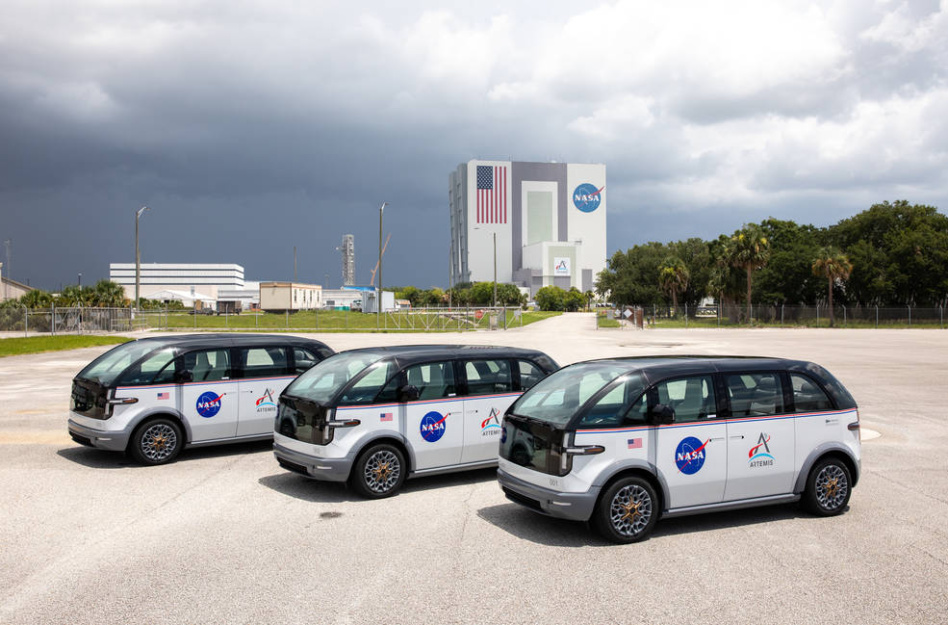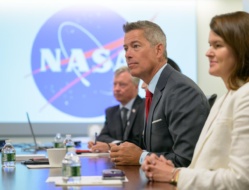NASA astronauts are going to be riding in *ahem* style.
A brand new fleet of vans destined to carry Artemis crews to the launch pad ahead of their journeys to the Moon arrived at KSC on Tuesday. The vans, built by CA-based Canoo Technologies Inc., are fully electric, zero-emission vehicles designed to fit four fully garbed-up astronauts ready for flight.
- Some aspects of the design came from the Artemis launch director and a team from NASA’s Astronaut Office.
- Canoo based the overall form factor on its “Lifestyle Vehicle” (LV) design, which is meant to maximize space and efficiency in a relatively small area.
“The collaboration between Canoo and our NASA representatives focused on the crews’ safety and comfort on the way to the pad ahead of their journey to the Moon,” Charlie Blackwell-Thompson, NASA’s Artemis launch director, said in a statement. “I have no doubt everyone who sees these new vehicles will feel the same sense of pride I have for this next endeavor of crewed Artemis missions.”
The new vans join the current generation of “astrovans” used by the agency. Crew Dragon fliers ride to the pad in Tesla Model Xs, and Boeing’s Starliner crew members will take their trip in a modified Airstream.




